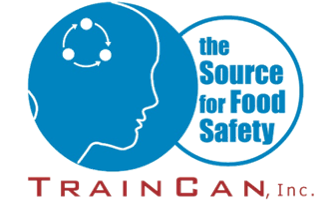On the Front Lines of Food Safety: A Day in the Life of a Food Safety Inspector
Article By Alicia Maroney Published May 22, 2025
Article Source: https://www.foodpoisoningnews.com/on-the-front-lines-of-food-safety-a-day-in-the-life-of-a-food-safety-inspector/
Every time you enjoy a sandwich from a deli, a chicken dinner at a restaurant, or a carton of eggs from the grocery store, there’s a dedicated professional behind the scenes making sure your food is safe to eat. That person is a food safety inspector. While often overlooked by the public, these essential workers play a crucial role in preventing foodborne illnesses and ensuring that food production meets strict safety standards.
But what exactly does a food safety inspector do during a typical day?
Early Start and Daily Briefings
Most food safety inspectors begin their day early—often by 6:00 or 7:00 a.m.—especially if they’re assigned to slaughterhouses or processing plants that operate on tight schedules. Inspectors with the U.S. Department of Agriculture’s Food Safety and Inspection Service (FSIS) or local health departments often start by reviewing the day’s assignments, checking for alerts or follow-up inspections, and reviewing any recent complaints or enforcement actions.
Before heading to the field, an inspector may review Hazard Analysis and Critical Control Points (HACCP) plans, which outline how a facility identifies and manages food safety hazards. If a site had violations in the past, inspectors pay close attention to those areas.
On-Site Inspections: Walking the Floor
Once at the facility, a large part of the day is spent walking the floor of a food processing plant, slaughterhouse, restaurant, or grocery store, depending on their jurisdiction. Inspectors conduct a comprehensive evaluation, including:
Sanitation standards: Checking for cleanliness of equipment and work surfaces.
Temperature control: Ensuring proper refrigeration and cooking temperatures.
Pest control: Looking for signs of rodent or insect infestations.
Employee hygiene: Observing if workers are washing hands, wearing gloves, and using hairnets.
Storage practices: Making sure raw and cooked items are stored separately and correctly.
They also inspect packaging labels to confirm allergen declarations and expiration dates. Inspectors use thermometers, swab tests, and sometimes rapid bacteria detection tools to verify conditions meet legal standards.
For inspectors in slaughterhouses, it’s a more intensive process. FSIS inspectors examine every animal before and after slaughter, checking for visible signs of disease, contamination, or distress.
Documentation and Compliance
Throughout the inspection, meticulous notes and photographs are taken. Inspectors often use tablets or mobile software to input data in real time. If violations are found, the inspector may issue a Notice of Violation (NOV) or even shut down a facility until corrections are made.
The job requires balancing diplomacy with diligence. Food safety inspectors often work with facility managers to correct issues on the spot but must also be firm when public health is at risk.
Lunch on the Go
Ironically, many food safety inspectors have to be very cautious about where they eat lunch. Many bring their own food—after all, who better knows what could go wrong in a kitchen than someone who inspects them daily?
Afternoon Reporting and Follow-Ups
After on-site work, inspectors return to the office or home base to complete detailed inspection reports, upload lab samples, and schedule follow-ups. If a serious food safety threat is identified, such as Salmonella or Listeria contamination, the inspector may coordinate with other agencies like the Centers for Disease Control and Prevention (CDC) or FDA for further action, including recalls or public health alerts.
Inspectors may also conduct follow-up visits to verify that corrective actions have been implemented.
Skills and Training
Food safety inspectors must be trained in microbiology, food science, sanitation practices, and federal regulations. Many hold degrees in public health, environmental health, or animal science. Continuing education is vital, as pathogens evolve, and food production technologies advance.
Strong communication skills are also essential. Inspectors interact with everyone from kitchen staff to CEOs and must explain complex safety issues clearly and constructively.
Why Their Work Matters
According to the CDC, an estimated 48 million Americans get sick from foodborne illnesses every year, with 128,000 hospitalizations and 3,000 deaths. Food safety inspectors are on the front lines of preventing those illnesses. Their work helps prevent outbreaks, protect children and the immunocompromised, and maintain consumer trust in the food supply.
Final Note
The job of a food safety inspector isn’t glamorous, but it is vital. With each shift, they protect communities from invisible threats that could otherwise go unchecked. Whether walking through the cold corridors of a meat plant or the bustling kitchen of a school cafeteria, food safety inspectors carry out their duties with integrity, precision, and a shared mission: to keep the public safe, one inspection at a time.
